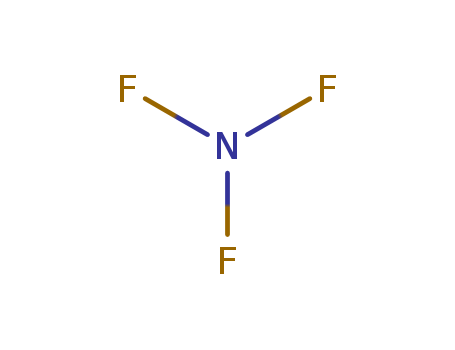10.1021/ic50016a044
The main content of the study revolves around the chemical reactions involving various nitrides and oxygen difluoride (O2F2). The research explores the fluorination of different types of nitrides, such as lithium nitride (Li3N), beryllium nitride (Be3N2), magnesium nitride (Mg3N2), boron nitride (BN), silicon nitride (Si3N4), titanium nitride (TiN), vanadium nitride (VN), and copper(I) nitride, using elementary fluorine. The aim is to establish if there is a relationship between the structure of a nitride and the formation of nitrogen trifluoride (NF3) as a product of its direct fluorination. Additionally, the study investigates the reaction of oxygen difluoride with sulfur dioxide, sulfur trioxide, and peroxydisulfuryl difluoride, focusing on the photochemical decomposition and the role of 0-F radical species as reaction intermediates. The experiments involve irradiating gaseous mixtures with ultraviolet light to observe the reactions and identify the products, which include peroxysulfuryl difluoride, pyrosulfuryl fluoride, sulfuryl fluoride, and fluorine fluorosulfonate, among others. The study employs various analytical techniques such as infrared and F19 n.m.r. spectroscopy to characterize the compounds formed.
10.1021/ic900633k
The study focuses on the formation and calculations of simple terminal triplet pnictinidene molecules, specifically N÷MF3, P÷MF3, and As÷MF3, where M represents Ti (Titanium), Zr (Zirconium), and Hf (Hafnium). The researchers used laser-ablated atoms of Ti, Zr, and Hf and reacted them with NF3 (Nitrogen trifluoride), PF3 (Phosphorus trifluoride), or AsF3 (Arsenic trifluoride) to produce the triplet state terminal pnictinidene molecules. These molecules were trapped in an argon matrix and identified through infrared spectra and theoretical calculations. The purpose of using these chemicals was to investigate the formation and properties of these novel molecules, which are of interest due to their unique electronic structures and potential applications in understanding reactive intermediates and organometallic chemistry. The study aimed to understand the bonding interactions and stability of these molecules, providing insights into the weak π bonding between the pnictinidene elements (N, P, As) and the early transition metal group 4 elements (Ti, Zr, Hf).



 O
O


